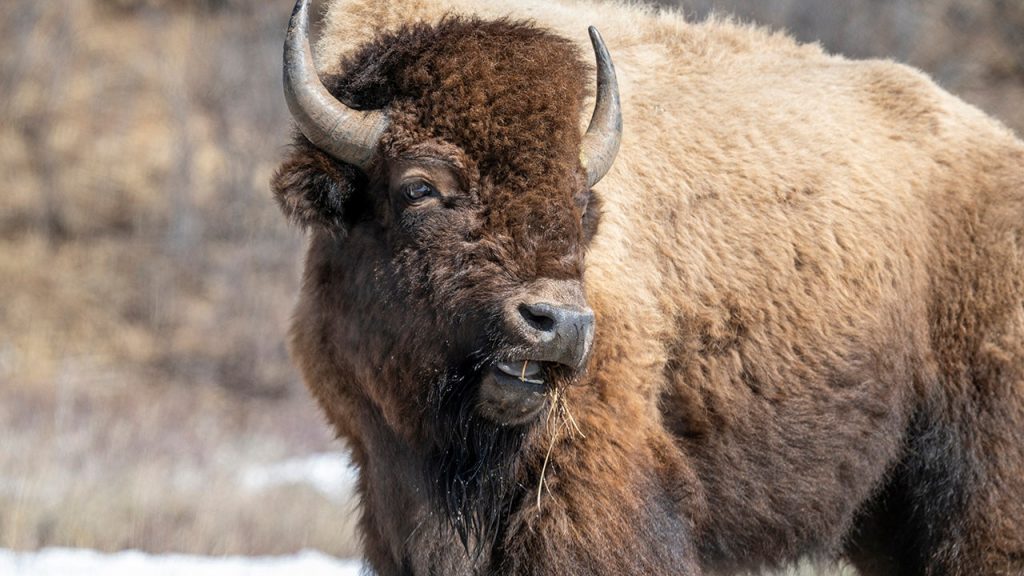A tourist visiting Yellowstone National Park was injured after being gored by a bison, highlighting ongoing concerns about safety in areas where wildlife and humans interact. The incident occurred on Tuesday morning when a large group of visitors approached the animal too closely. This incident marks the second bison-related injury at Yellowstone this year, and officials are reiterating warnings about maintaining a safe distance from wildlife.
| Article Subheadings |
|---|
| 1) Incident Details: The Bison Attack |
| 2) Previous Incidents: A Pattern of Inattention |
| 3) Expert Opinions: Safety Protocols in Wildlife Areas |
| 4) Park Warnings: Importance of Keeping Distance |
| 5) Conclusion: Will Visitors Heed the Warnings? |
Incident Details: The Bison Attack
The attack took place around 9:45 a.m. on a busy Tuesday morning in the Upper Geyser Basin near the iconic Old Faithful geyser. The victim, a 30-year-old man from Randolph, was injured when he approached the bison too closely. According to initial reports from the National Park Service (NPS), the man sustained minor injuries and was treated onsite before being transported to a local medical facility for further evaluation. Officials from the NPS indicated that this incident is reflective of a larger issue regarding human interactions with wildlife, particularly the dangers posed by large animals like bison.
Previous Incidents: A Pattern of Inattention
Interestingly, this incident is not an isolated case. Earlier this year, another injury was reported on May 4 when a 47-year-old tourist from Cape Coral, Florida, was also gored after approaching a bison in the Lake Village area. That incident, like the most recent one, involved the tourist violating safety protocols by coming too close to the animal. In fact, the National Park Service noted that there have already been two recorded incidents of human injuries due to bison encounters in just this year alone. Notably, there was only one such incident reported in the previous year, indicating a disturbing trend that could be attributed to an increase in visitors as well as a growing disregard for safety guidelines concerning wildlife.
Expert Opinions: Safety Protocols in Wildlife Areas
Experts in wildlife management emphasize the importance of respecting wildlife in their natural habitat.
“Wild animals can be aggressive if people don’t respect their space,”
said a representative from the NPS. This highlights the essential guideline that all visitors should maintain a minimum distance of more than 25 yards from large animals. For apex predators like bears and wolves, that distance extends to at least 100 yards. The ability of bison to defend their territory makes them particularly dangerous; they can run at speeds up to three times faster than an average human. Visitors are encouraged to heed these guidelines seriously, as their safety—and the well-being of the wildlife—depends on it.
Park Warnings: Importance of Keeping Distance
The NPS has reiterated that maintaining safe viewing distances is not just a suggestion but a necessity for visitors. The park service warns,
“If wildlife approach you, move away to always maintain these safe viewing distances.”
The statistics speak for themselves: bison at Yellowstone have been known to pose more risks to human safety than any other animal present in the park. This serves as a cautionary tale for visitors who underestimate the unpredictability and aggression of these majestic creatures.
Conclusion: Will Visitors Heed the Warnings?
With the increase in tourism and the concurrent rise in close encounters with bison, it remains to be seen whether park officials can successfully communicate the importance of safety guidelines to the public. Both the recent incidents in 2023 and prior events highlight a persistent issue: the temptation for visitors to get too close to wildlife for a memorable photo or experience. As the park continues to attract millions of visitors each year, the challenge lies in educating them on responsible wildlife interactions.
| No. | Key Points |
|---|---|
| 1 | A tourist in Yellowstone National Park was gored by a bison due to close proximity. |
| 2 | This incident marks the second bison-related injury in 2023, following another incident in May. |
| 3 | The National Park Service stresses the importance of maintaining safe distances from wildlife. |
| 4 | Bison can run three times faster than humans and are known to be unpredictable. |
| 5 | Visitor education on safety protocols is essential for preventing future injuries. |
Summary
The incidents involving bison at Yellowstone National Park serve as critical reminders of the need for caution when interacting with wildlife. With a rising number of visitors to the park, it is imperative that all individuals understand the risks associated with close encounters and how to engage responsibly with the natural environment. As officials continue to emphasize safety guidelines, the hope is that these measures will lead to a reduction in injuries and foster a safer experience for all park-goers.
Frequently Asked Questions
Question: What are the safety protocols for interacting with wildlife in Yellowstone?
Visitors are advised to maintain a distance of at least 25 yards from large animal species like bison and elk, and at least 100 yards from bears and wolves. If wildlife approaches, it is critical to move away to ensure safety.
Question: What injuries have occurred recently in Yellowstone related to bison?
Two incidents in 2023 have involved injuries from bison goring tourists who approached the animals too closely. The injuries were minor but highlight a serious safety concern.
Question: Why are bison considered dangerous in Yellowstone?
Bison can be unpredictable and are known to charge at perceived threats. They are capable of running three times faster than an average human, making them particularly hazardous in close encounters.
